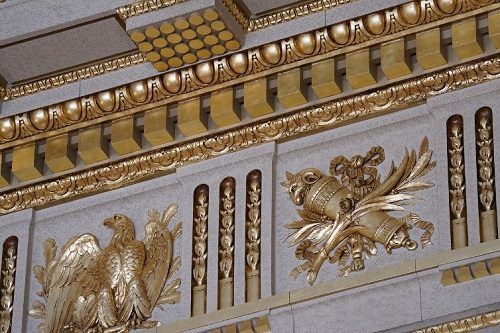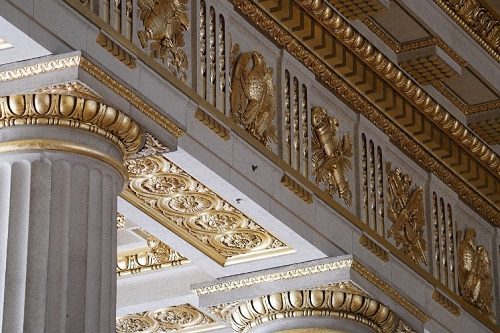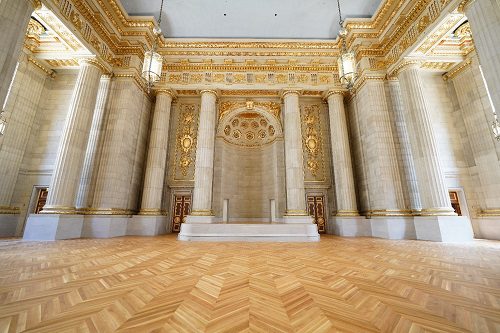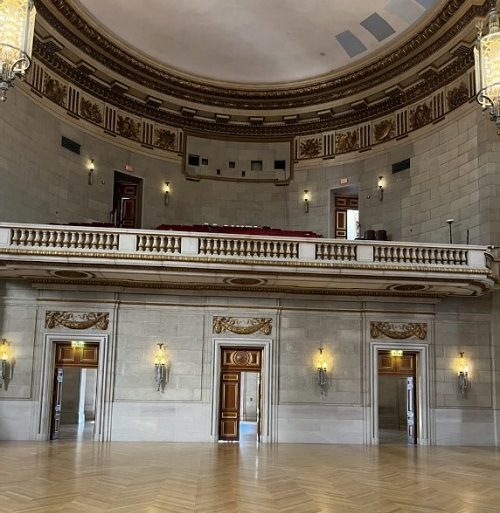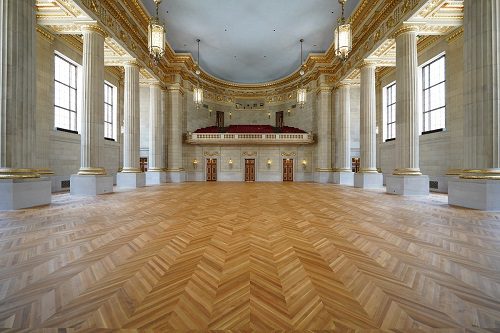Mellon Auditorium
John Canning & Co. performed restoration of the Auditorium's finishes for the walls, columns, entablatures, and the ceiling.
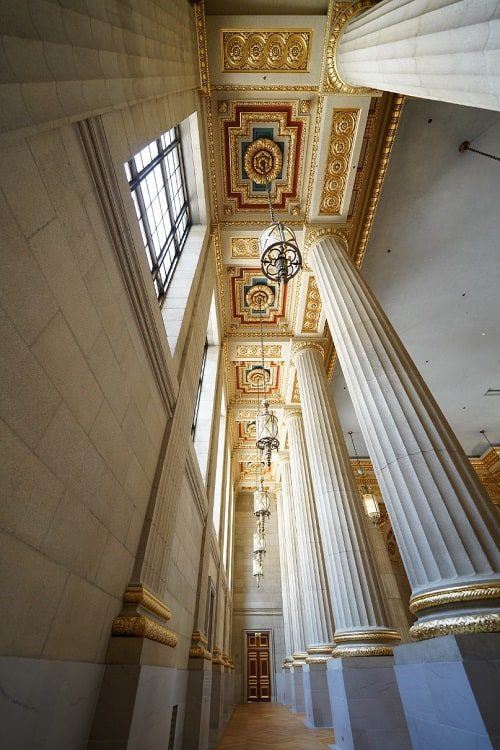
BUILDING FACTS
Location: Washington, DC
Built: 1934
Original Architect: Arthur Brown Jr.
Style: Classical Revival
Status: National Register of Historic Places
SCOPE
Designed by San Francisco architect Arthur Brown, Jr., and erected between 1932- 1934, the Andrew W. Mellon Auditorium serves as the central focus of his tripartite building group. It is the most dramatic example of Classical Revival architecture in the Federal Triangle. The Triangle is a massive complex of government buildings constructed during the 1930s on a site bounded by Pennsylvania and Constitution Avenues between 6th and 15th Streets, NW.
The grandeur of the building’s exterior is matched by its interior. At the heart of the building is the spectacular auditorium standing more than 60 feet in height and embellished with limestone pilasters, gilded relief carvings, and polished oak. Colossal luminaries, made of brass and burnished aluminum, are suspended from the ceiling. Fluted Doric columns surround the room consisting of crushed clam shell and serving as acoustical stone. Also constructed of crushed clam shell are the auditorium walls with the lower portions pierced only by doors and vents with ornamental grilles. Such detailed construction practices helped to make the Mellon Auditorium an acoustical marvel considering its grand size and scale. The Auditorium’s great hall measuring 79’ x 102’ can hold 1000 people.
In 2022 John Canning & Co. was brought in to perform restoration work in the Auditorium. The initial work consisted of mockups and color matching for the historic stone walls, columns, and ceiling. Canning also performed Sphinxstone wall & column repair, cleaning & finishes restoration that included gilding an inpainting. The ceiling and entablatures were also cleaned, and repair and restoration took place where necessary that included gilding, plaster repairs, decorative painting, and general painting. The plaster entablatures received a simulated stone finish treatment to have the appearance of cast stone. The simulated stone finish included several applications of colored translucent glazes.
One of the unique aspects of this restoration project was that the massive stone columns and walls are made of an acoustic, pre-cast simulated stone called Sphinxstone, designed to mimic limestone's aesthetic appearance and acoustic properties using seashells. During the process of the restoration of the Sphinxstone, our team utilized a combination of innovative and classic restoration techniques to bring the stone back to its original appearance. Our innovative approach to using both modern materials and traditional techniques allowed for a sensitive restoration that maintained the historical character and properties of the original simulated limestone.

